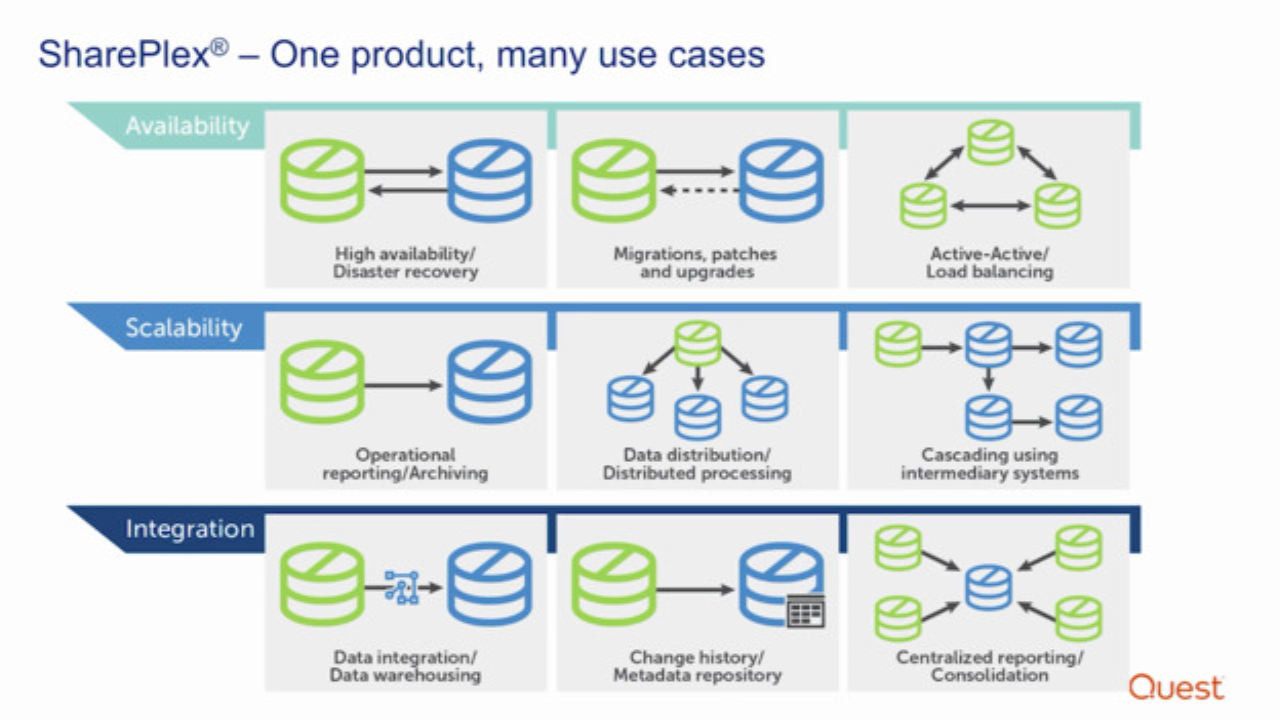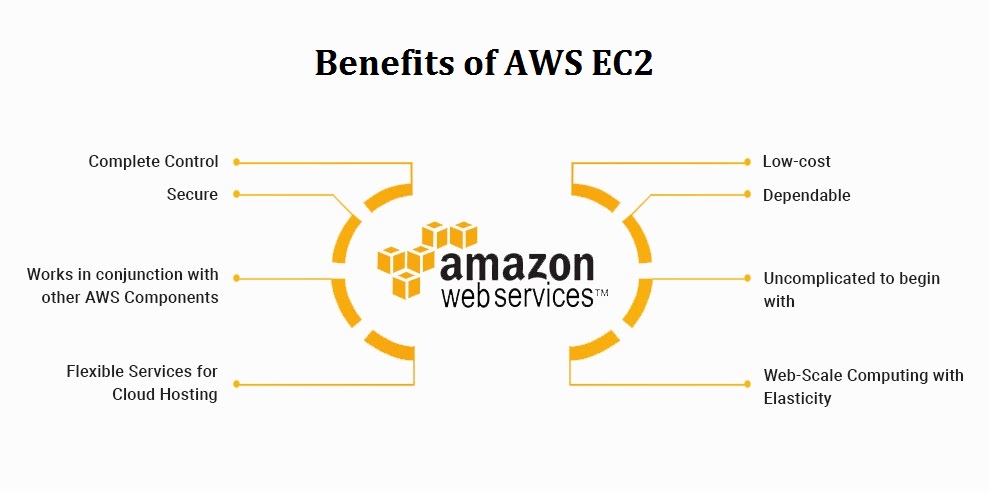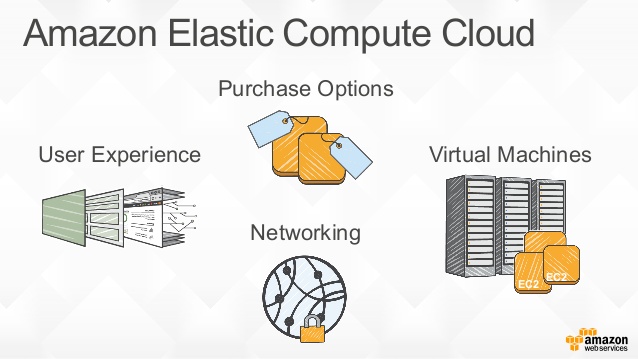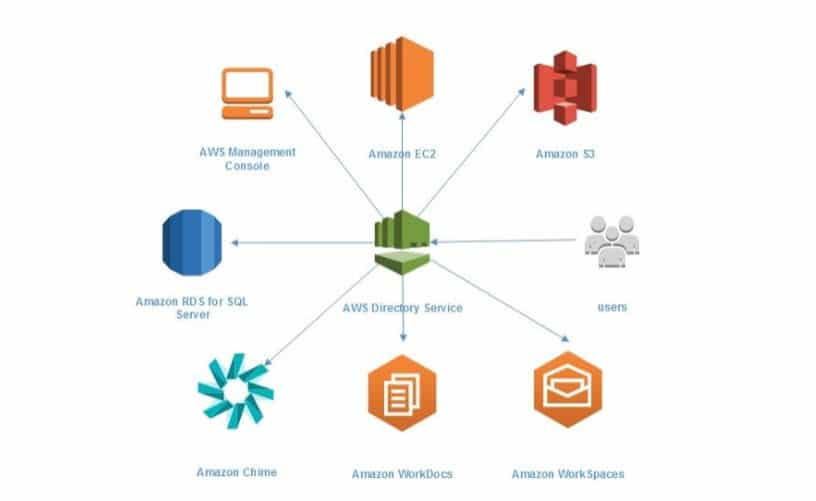Unraveling the Basics: Understanding Amazon Elastic Compute Cloud
Amazon Elastic Compute Cloud (EC2) is a fundamental component of Amazon Web Services (AWS), a leading cloud computing platform. As a scalable cloud computing service, EC2 offers secure, adaptable compute capacity in the AWS cloud. This makes it an indispensable resource for businesses and developers aiming to expand their applications and infrastructure.
Key Features and Benefits of Amazon EC2
Amazon Elastic Compute Cloud (EC2) offers a wide range of features and benefits that make it an attractive choice for businesses and developers. One of its primary advantages is automatic scaling, which enables instances to adapt to changes in workload by adding or removing resources as needed. This ensures optimal performance and cost-efficiency.
Another significant benefit of Amazon EC2 is its flexible pricing model. Users can choose from various pricing options, including On-Demand, Reserved, and Spot Instances, depending on their needs and budget. On-Demand Instances provide the flexibility to pay for compute capacity by the hour or second, without requiring long-term commitments. Reserved Instances offer a discounted price in exchange for a commitment to a specific instance type for a term of 1 or 3 years. Spot Instances enable users to bid on spare Amazon EC2 computing capacity at up to a 90% discount compared to On-Demand prices.
Amazon EC2 supports multiple operating systems, such as Linux, Windows, and macOS, allowing users to select the one that best suits their requirements. Additionally, EC2 instances can be quickly launched and terminated, minimizing the time and effort needed to manage infrastructure.
Lastly, Amazon EC2 is designed to integrate seamlessly with other AWS services, including Amazon Simple Storage Service (S3), Amazon Relational Database Service (RDS), and AWS Lambda. These integrations can significantly enhance the functionality and scalability of applications and infrastructure, making Amazon EC2 an even more compelling choice for businesses and developers.
How to Set Up an Amazon EC2 Account and Launch Your First Instance
To get started with Amazon Elastic Compute Cloud (EC2), follow these steps to create an account and launch your first instance:
-
Sign up for an AWS account: Visit the AWS homepage and click on the ‘Create an AWS Account’ button. Fill in the required details, and ensure you have a valid payment method. AWS offers a 12-month Free Tier for new accounts, which allows you to explore many AWS services, including EC2, at no cost.
-
Navigate to the EC2 Dashboard: Once your account is set up, log in to the AWS Management Console and search for ‘EC2’ in the Find Services search bar. Click on the EC2 link to access the EC2 Dashboard.
-
Launch an Instance: On the EC2 Dashboard, click on the ‘Launch Instance’ button. This will open the ‘Choose an Amazon Machine Image (AMI)’ page, where you can select a pre-configured AMI or create a custom AMI. For this guide, choose a pre-configured AMI, such as the ‘Amazon Linux 2 AMI’.
-
Configure Instance Details: After selecting an AMI, you will be prompted to configure instance details, such as the number of instances, instance type, and networking options. For now, accept the default settings and click ‘Next’.
-
Add Storage: On the ‘Add Storage’ page, you can configure the storage options for your instance. For most use cases, the default settings will suffice. Click ‘Next’ to proceed.
-
Add Tags: Tags allow you to categorize your instances for better management and organization. Add a relevant tag, such as a ‘Name’ tag with a value of your choice, then click ‘Next’.
-
Configure Security Group: Security Groups act as a virtual firewall for your instances, controlling inbound and outbound traffic. Set up a security group that allows the necessary traffic for your use case. For example, if you’re setting up a web server, ensure that inbound traffic on ports 80 (HTTP) and 443 (HTTPS) is allowed.
-
Review and Launch: Review your instance configuration and make any necessary changes. Once satisfied, click the ‘Launch’ button. A key pair will be required to securely connect to your instance; either create a new key pair or use an existing one. Download and save the key pair file, as you will need it to connect to your instance.
-
Access your Instance: After launching the instance, you can access it using a tool like the Amazon EC2 Instance Connect or an SSH client. The EC2 Dashboard will display the instance’s public IP address or DNS name, which you can use to connect to your instance.
By following these steps, you have successfully set up an Amazon EC2 account and launched your first instance. You can now start exploring the features and benefits of Amazon EC2 and integrate it with other AWS services to build scalable, secure, and cost-efficient applications and infrastructure.
Exploring Amazon EC2 Instance Types and Pricing Models
Amazon EC2 offers a diverse range of instance types and pricing models to cater to various workload requirements and budgets. Understanding these options can help you optimize performance and cost-efficiency.
Instance Types
Instance types are designed to provide the optimal balance of compute, memory, and networking resources for different use cases. Amazon EC2 offers the following instance types:
- General Purpose: Balanced instances for a wide range of workloads, such as web servers, small and medium databases, and development environments.
- Compute Optimized: High-performance instances for compute-intensive workloads, such as batch processing, high-performance computing, and gaming servers.
- Memory Optimized: Instances with large memory sizes for workloads that require high memory, such as databases, data processing engines, and in-memory caches.
- Accelerated Computing: Instances with hardware accelerators, such as GPUs and FPGAs, for workloads like machine learning, high-performance computing, and video encoding.
Pricing Models
Amazon EC2 offers various pricing models to suit different needs:
- On-Demand Instances: Pay for compute capacity by the hour or second with no long-term commitments. Ideal for applications with short-term, spiky, or unpredictable workloads.
- Reserved Instances: Save up to 75% over On-Demand instances by committing to a specific instance type for a term of 1 or 3 years. Suitable for steady-state workloads.
- Spot Instances: Bid on spare Amazon EC2 computing capacity at up to a 90% discount compared to On-Demand prices. Ideal for workloads that have flexible start and end times, such as data processing, containerized workloads, and CI/CD.
By understanding the various Amazon EC2 instance types and pricing models, you can make informed decisions about which resources to use for your specific workloads, ensuring optimal performance and cost-efficiency.
Securing Your Amazon EC2 Environment
Security is a critical aspect of any cloud infrastructure, and Amazon EC2 provides several best practices and tools to help you maintain a secure environment for your applications and data.
Security Groups
Security Groups act as a virtual firewall for your Amazon EC2 instances, controlling inbound and outbound traffic based on predefined rules. You can create and manage Security Groups using the AWS Management Console, the AWS CLI, or the Amazon EC2 API. When creating a Security Group, specify the allowed protocols, ports, and source or destination IP ranges. This enables you to control access to your instances and ensure only authorized traffic is allowed.
Key Pairs
Key Pairs are used to securely connect to your Amazon EC2 instances using SSH for Linux instances or RDP for Windows instances. A Key Pair consists of a private key, which you store securely, and a public key, which is uploaded to Amazon EC2. When launching an instance, you can specify the Key Pair to associate with it. This allows you to authenticate using your private key when connecting to the instance, ensuring secure access.
Identity and Access Management (IAM) Roles
IAM Roles enable you to delegate access to AWS services and resources without sharing long-term credentials or creating individual user accounts. When you create an IAM Role, you define a set of permissions that specify what actions are allowed. You can then attach the IAM Role to your Amazon EC2 instances, allowing applications and services running on those instances to perform actions on your behalf.
Data Encryption
Encrypting data at rest and in transit is essential for maintaining data confidentiality and integrity. Amazon EC2 supports encryption for Elastic Block Store (EBS) volumes, Amazon Machine Images (AMIs), and data transferred between instances using the Secure Sockets Layer (SSL) or Transport Layer Security (TLS) protocols.
By following these best practices and utilizing the tools provided by Amazon EC2, you can ensure a secure and compliant environment for your applications and data.
Monitoring and Troubleshooting Amazon EC2 Instances
Monitoring and troubleshooting your Amazon EC2 instances is crucial to ensure optimal performance and address any issues that may arise. AWS provides several tools to help you effectively monitor and diagnose problems with your instances.
Amazon CloudWatch
Amazon CloudWatch is a monitoring and observability service that provides real-time visibility into your Amazon EC2 resources, applications, and services. CloudWatch collects metrics, logs, and events from your resources, enabling you to track performance, monitor trends, and troubleshoot issues. With CloudWatch, you can:
- Set up custom alarms and notifications based on specific performance metrics.
- Visualize metrics using graphs, charts, and custom dashboards.
- Analyze log data to identify trends, anomalies, and potential issues.
- Store and retrieve log data for as long as you need it.
AWS CloudTrail
AWS CloudTrail is a service that enables governance, compliance, operational auditing, and risk auditing of your AWS account. CloudTrail records API calls made on your account and delivers log files to an S3 bucket, enabling you to track user activity, resource changes, and API calls. With CloudTrail, you can:
- Identify who and when made changes to your resources.
- Monitor API calls to detect unusual or unauthorized activity.
- Audit your AWS resources to ensure compliance with internal policies and regulatory requirements.
Troubleshooting Performance Issues
To troubleshoot performance issues with your Amazon EC2 instances, follow these steps:
- Review CloudWatch metrics to identify any anomalies or trends that may indicate a problem.
- Analyze CloudWatch logs to gain more context about the issue and pinpoint potential causes.
- Check the system and application logs on the instance itself for additional information.
- Consult AWS documentation, forums, and support resources for guidance on resolving the issue.
By effectively monitoring and troubleshooting your Amazon EC2 instances, you can maintain optimal performance, minimize downtime, and ensure a positive user experience.
Integrating Amazon EC2 with Other AWS Services
Amazon Elastic Compute Cloud (EC2) is designed to seamlessly integrate with other Amazon Web Services (AWS) offerings, enabling you to build robust, scalable, and secure applications and infrastructure. In this section, we will discuss how to integrate EC2 with Amazon Simple Storage Service (S3), Amazon Relational Database Service (RDS), and AWS Lambda.
Amazon Simple Storage Service (S3)
Amazon S3 is a scalable, high-speed, web-based cloud storage service that can be used to store and retrieve any amount of data, at any time, from anywhere on the web. By integrating EC2 with S3, you can:
- Store and retrieve data for your EC2 instances.
- Create backups and archives of your EC2 instances.
- Serve static content, such as images and videos, from S3 to your EC2-hosted web applications.
Amazon Relational Database Service (RDS)
Amazon RDS is a managed relational database service that makes it easy to set up, operate, and scale a relational database in the cloud. By integrating EC2 with RDS, you can:
- Launch and manage databases for your EC2 instances.
- Automate database tasks, such as patching, backups, and replication.
- Scale your databases up or down as needed, without incurring downtime.
AWS Lambda
AWS Lambda is a serverless compute service that lets you run your code without provisioning or managing servers. By integrating EC2 with Lambda, you can:
- Trigger Lambda functions in response to events, such as changes to your EC2 instances or S3 buckets.
- Build event-driven architectures that automatically scale based on demand.
- Reduce the need for managing and scaling traditional application infrastructure.
By integrating Amazon EC2 with other AWS services, you can create powerful, flexible, and scalable applications and infrastructure that meet the unique needs of your business. Leveraging the strengths of these interconnected services can help you optimize performance, reduce costs, and enhance security, all while ensuring a seamless user experience.
Real-World Use Cases of Amazon Elastic Compute Cloud
Amazon Elastic Compute Cloud (EC2) has become an indispensable tool for businesses and developers across various industries, enabling them to scale their applications and infrastructure with ease. In this section, we will explore real-world use cases of Amazon EC2 in web hosting, data processing, and machine learning.
Web Hosting
EC2 is widely used for web hosting, as it offers the flexibility to quickly scale resources up or down based on traffic demands. For instance, e-commerce companies can use EC2 to manage seasonal fluctuations in traffic, while media companies can leverage EC2 to handle spikes in traffic during live events. EC2 also supports various web servers, such as Apache, Nginx, and Microsoft IIS, making it a versatile solution for web hosting.
Data Processing
Data processing is another area where EC2 excels, as it allows businesses to quickly process large datasets without investing in expensive hardware. For example, financial services firms can use EC2 to analyze market data in real-time, while healthcare organizations can leverage EC2 to process medical records for research and analysis. EC2 also integrates seamlessly with other AWS services, such as Amazon S3 and Amazon Kinesis, enabling businesses to build end-to-end data processing pipelines in the cloud.
Machine Learning
Machine learning (ML) is a rapidly growing field, and EC2 provides a powerful platform for building and deploying ML models. EC2 offers a range of ML-optimized instances, such as the P3 and G4 instances, which are equipped with high-performance GPUs and FPGAs for ML workloads. Additionally, EC2 integrates with Amazon SageMaker, a fully managed ML service, enabling developers to build, train, and deploy ML models quickly and easily.
In conclusion, Amazon Elastic Compute Cloud (EC2) is a versatile and powerful cloud computing service that offers a range of benefits for businesses and developers. From automatic scaling and flexible pricing to seamless integration with other AWS services, EC2 provides a solid foundation for building and deploying scalable and secure applications and infrastructure. By exploring real-world use cases in web hosting, data processing, and machine learning, we can see how EC2 has become an essential tool for businesses looking to scale their operations and achieve their goals.








